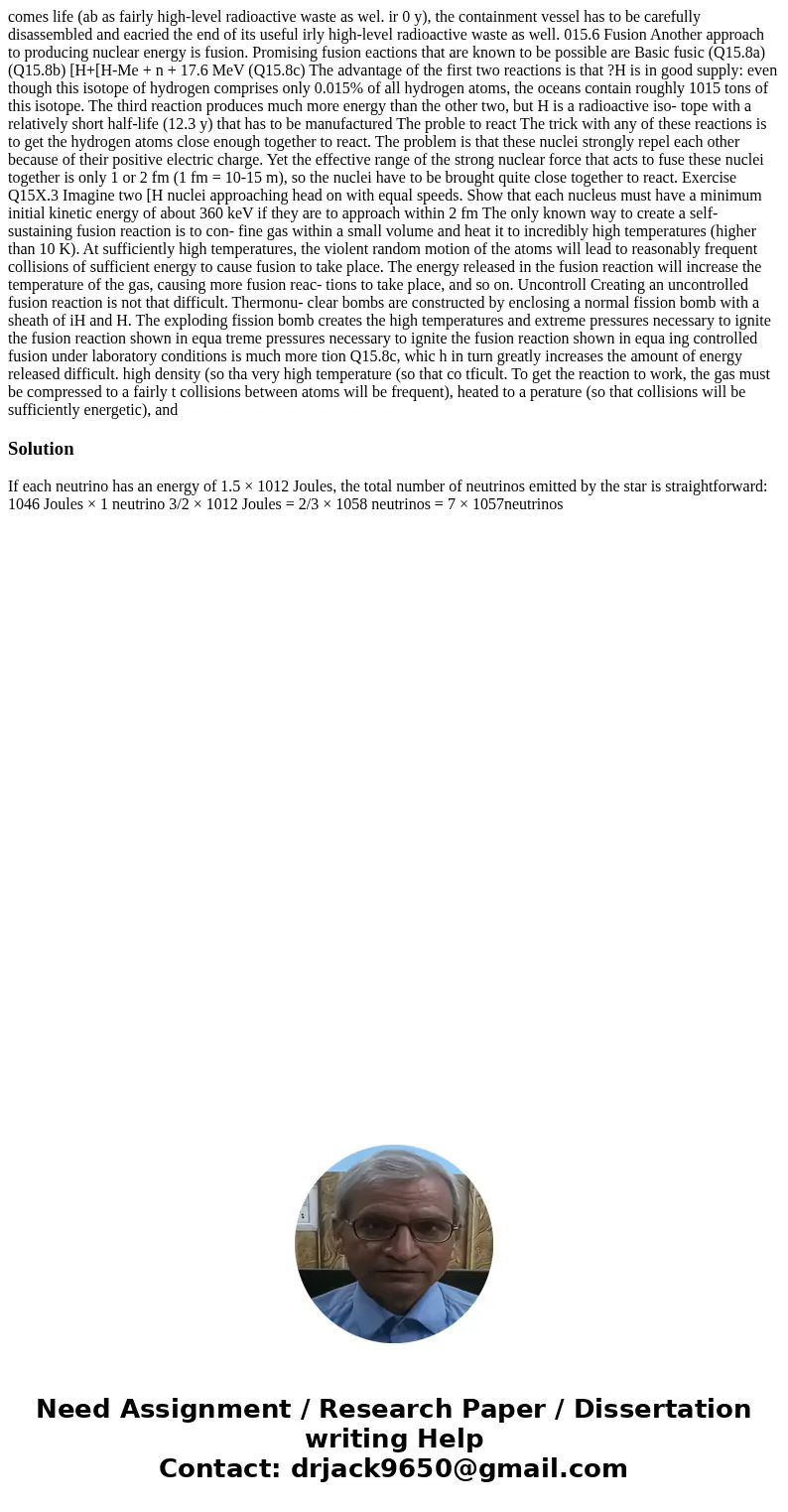comes life ab as fairly highlevel radioactive waste as wel i
comes life (ab as fairly high-level radioactive waste as wel. ir 0 y), the containment vessel has to be carefully disassembled and eacried the end of its useful irly high-level radioactive waste as well. 015.6 Fusion Another approach to producing nuclear energy is fusion. Promising fusion eactions that are known to be possible are Basic fusic (Q15.8a) (Q15.8b) [H+[H-Me + n + 17.6 MeV (Q15.8c) The advantage of the first two reactions is that ?H is in good supply: even though this isotope of hydrogen comprises only 0.015% of all hydrogen atoms, the oceans contain roughly 1015 tons of this isotope. The third reaction produces much more energy than the other two, but H is a radioactive iso- tope with a relatively short half-life (12.3 y) that has to be manufactured The proble to react The trick with any of these reactions is to get the hydrogen atoms close enough together to react. The problem is that these nuclei strongly repel each other because of their positive electric charge. Yet the effective range of the strong nuclear force that acts to fuse these nuclei together is only 1 or 2 fm (1 fm = 10-15 m), so the nuclei have to be brought quite close together to react. Exercise Q15X.3 Imagine two [H nuclei approaching head on with equal speeds. Show that each nucleus must have a minimum initial kinetic energy of about 360 keV if they are to approach within 2 fm The only known way to create a self-sustaining fusion reaction is to con- fine gas within a small volume and heat it to incredibly high temperatures (higher than 10 K). At sufficiently high temperatures, the violent random motion of the atoms will lead to reasonably frequent collisions of sufficient energy to cause fusion to take place. The energy released in the fusion reaction will increase the temperature of the gas, causing more fusion reac- tions to take place, and so on. Uncontroll Creating an uncontrolled fusion reaction is not that difficult. Thermonu- clear bombs are constructed by enclosing a normal fission bomb with a sheath of iH and H. The exploding fission bomb creates the high temperatures and extreme pressures necessary to ignite the fusion reaction shown in equa treme pressures necessary to ignite the fusion reaction shown in equa ing controlled fusion under laboratory conditions is much more tion Q15.8c, whic h in turn greatly increases the amount of energy released difficult. high density (so tha very high temperature (so that co tficult. To get the reaction to work, the gas must be compressed to a fairly t collisions between atoms will be frequent), heated to a perature (so that collisions will be sufficiently energetic), and 
Solution
If each neutrino has an energy of 1.5 × 1012 Joules, the total number of neutrinos emitted by the star is straightforward: 1046 Joules × 1 neutrino 3/2 × 1012 Joules = 2/3 × 1058 neutrinos = 7 × 1057neutrinos

 Homework Sourse
Homework Sourse